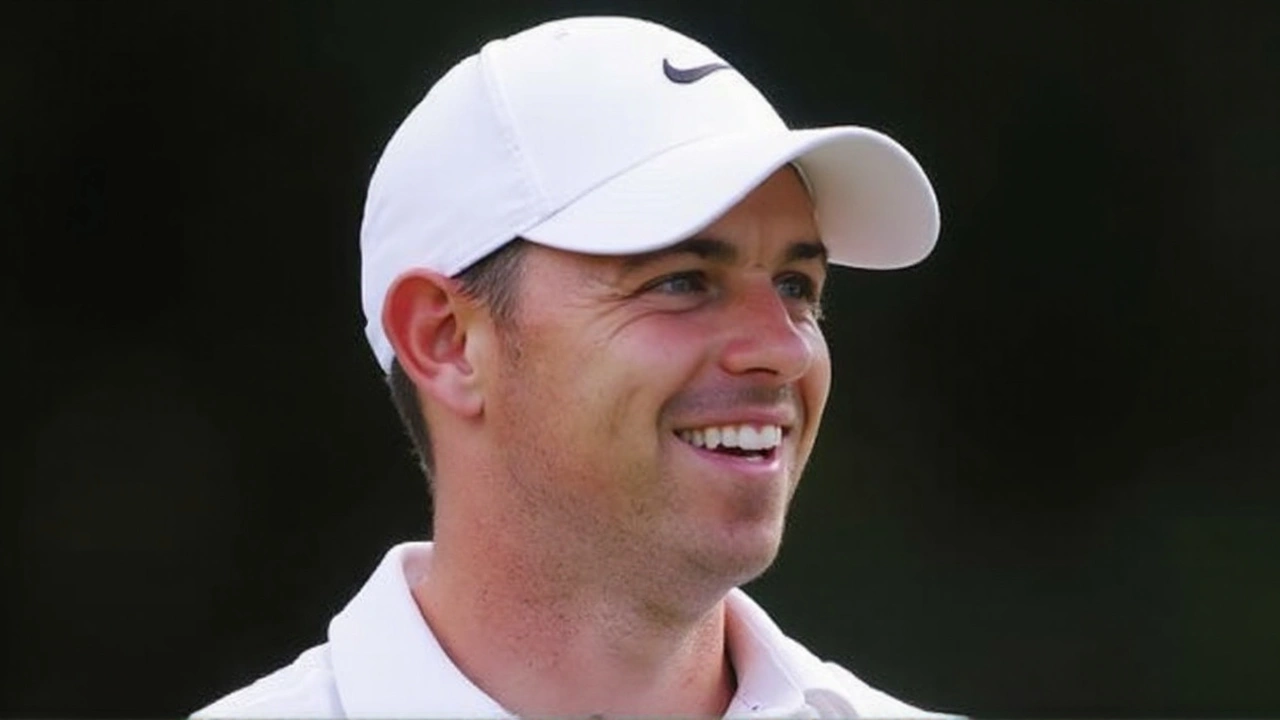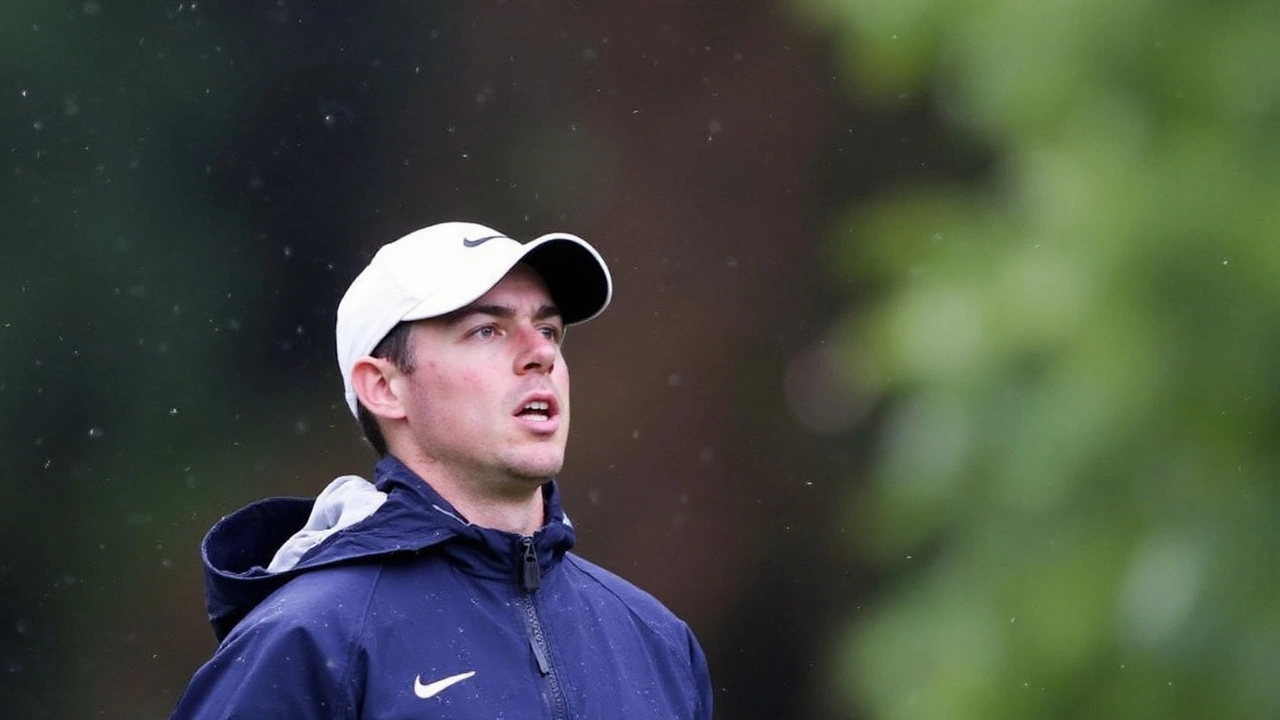
Bookmakers have planted a flag: Rory McIlroy at +400. No shock there. He’s the home superstar, a former winner at the K Club, and fresh off another season where his tee-to-green numbers travel. But does that short price actually pay you for the risk? In a national open that tends to throw curveballs and weather swings, the favorite’s margin for error shrinks fast.
McIlroy’s résumé at this venue is the draw. He won here in 2016 with that unforgettable 3-wood on the par-5 16th and has the length to bully the Palmer North course. His recent form keeps him near the top of every strokes-gained chart that matters. Still, +400 bakes in an implied probability of around 20 percent in a field packed with quality and plenty of players who fit the K Club on paper. If you’re betting the number, not the name, that’s a debate worth having.
Context matters with this event, too. The K Club’s Palmer North is a modern, water-laced test that rewards high, powerful tee shots and crisp long irons, then flips the script by forcing discipline on closing holes where big numbers lurk. Add the usual Irish forecast variable—breezes that puff up without warning, showers that move through in bands—and value can pop outside the top tier fast.
Odds board movers and the value lane
Shane Lowry at +1600 is the first name many pros point to. He just finished T13 at the Tour Championship and returns to a course where he’s contended in recent years. Lowry’s control in crosswinds, paired with a reliable short game on soft, overseeded turf, fits what the K Club often becomes by the weekend. He hasn’t lifted a trophy since his 2022 win at Wentworth, but the underlying form—multiple top 10s and two runner-up finishes this season—screams knocking on the door. If the putter behaves, the home crowd can carry him.
Tyrrell Hatton at +1100 sits in that awkward zone between favorite and value, but the case is simple: elite iron play, sharp par-5 scoring, and a proven ability to survive chaotic weather windows. He’s volatile, sure, yet volatility is a feature here, not a bug. If you want class near the top without paying the favorite’s tax, Hatton is the pivot.
Marco Penge at +1400 is shorter than many expected for a player still stitching together a top-tier résumé, but the market clearly respects his current form and power profile. This course rewards carry distance and aggressive par-5 lines—exactly where Penge can cash in. He’ll need a steady week with the wedges to justify the price, yet the ceiling is real.
Tom McKibbin around 30/1 has the home bounce and the game to handle this track. He’s already shown he can close on the DP World Tour, and his blend of speed and improving approach play is the right mix for Palmer North. On a board where the very top is tight, he’s the sort of mid-tier swing you make on talent and trajectory.
Jordan Smith at +3500 is a ball-striking metronome. One missed cut in his last 18 starts tells you plenty about the floor, and two runner-up finishes this season remind you the ceiling is still there. Smith also posted a T12 at the K Club two years back, and his long-iron proximity numbers are usually among the best in any field. If this becomes a second-shot contest, he’s live.
Hunters in the 20–80/1 range will find more names with punch. Rasmus Neergaard-Petersen around 25/1 has been trending for months—long, poised, and tidy under pressure. Matti Schmid at 50/1 brings the right speed and trajectory for a course that asks you to hit towering approaches into firming greens. And Grant Forrest, priced near +6600, keeps popping up on Irish layouts and arrives with recent winning confidence. He’s a sleeper who often outperforms his number when the wind flicks on.
If you’re structuring a card, think diversification over hero bets. One shorter anchor in the Lowry/Hatton lane, two mid-tier darts (McKibbin, Smith), and a couple of deeper flyers (Schmid, Forrest) is a sensible build. Layer in top-10 or top-20 positions to reduce variance; this course can flip scripts late on Sunday. First-round leader fliers are also viable if a soft morning wave appears—Palmer North offers three scorable par-5s and a handful of wedge looks before the afternoon gusts tend to lift.
Where does that leave McIlroy? Still the most likely winner on talent, but not necessarily the best bet at the sticker price. The recent history of this championship shows how fragile short odds can be on an exposed, water-heavy test. If the forecast evens out and he finds a spike week with the putter, he can run away. If not, the mid-tier is waiting.

The K Club blueprint: what wins here and why
Palmer North is a big-ballpark par 72 that stretches past 7,300 yards, with water in play on a dozen-plus holes and rough that grabs. The signature stretch from 16 through 18 is where titles go to die. The par-5 16th dangles eagle but punishes the greedy. The par-3 17th asks for a flighted shot over water that can be two clubs different from morning to afternoon. And 18 forces a committed tee shot with trouble lurking—perfect TV, terrible for a nervous lead.
Statistically, the profile is clear. Emphasize Strokes Gained: Approach from 175–225 yards, Par-5 scoring, and driving that favors carry over rollout. This isn’t always a bomber-only contest, but high apex, soft landings help when pins tuck near shelves. Around the greens, prioritize scrambling from thicker rough; bump-and-runs don’t travel well when collars are juicy. Bogey avoidance matters more than a typical birdie-fest because the blow-up holes are everywhere.
The weather wildcard is real. Irish opens often turn into wave lotteries when gusts split morning and afternoon. If a front moves through on Friday, scoring windows can swing by two or three shots between waves. That’s why many bettors wait for draw info before finalizing cards. Even without extremes, short bursts of wind at the K Club tend to cluster bogeys, which rewards patient players who take what the course gives.
Recent leaderboards at this venue tell the same story: mid-teens under par usually gets the trophy, and the cut can float anywhere from +1 to +3 depending on how firm it gets and how much the wind shows up. Players with experience at Palmer North or on Irish links-adjacent setups often keep their heads when the gusts arrive and the closing stretch tightens.
So, how do you turn all that into a plan? Match the profile to the price. If you like top-tier iron players with decent length who flight it well—Hatton and Smith fit. If you prefer form plus home comfort—Lowry and McKibbin fit. If you want ceiling at a discount—Schmid and Forrest fit. And if you still want McIlroy exposure, consider alternative markets like top-5, or build him into matchups rather than going all-in at +400.
One more practical note: shop around. Outright prices on this event can swing by several ticks, and each-way terms vary from 1/5 to 1/4 for 6–10 places depending on the book and timing. Those details matter on a course where late water balls can turn a win into a T6 in a heartbeat.
The headline says McIlroy is the man to beat. The odds say you’ll pay for that privilege. On a course that invites both hero shots and mistakes, the smarter move might be spreading your stake across several profiles that fit the Palmer North puzzle. The market has crowned the favorite; the Irish Open has a habit of crowning the brave.
Leave a comments